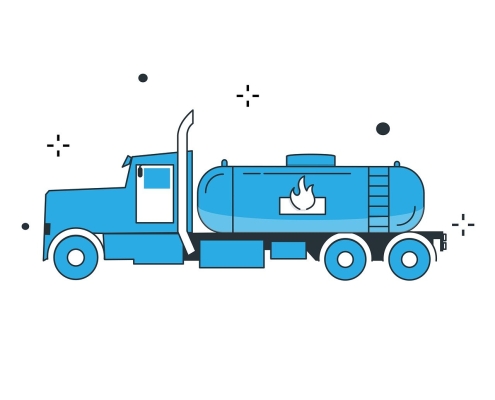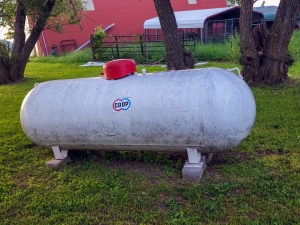Hedging 101 – Part Seven: Financial Swaps
In our previous Hedging 101 post we discussed one method of using a financial hub product to expand your margin. The expansion came from using a futures contract. A futures contract is the act of selling a financial hub product at some future date.
Risks of Using Futures Contracts
While it is always nice to expand your margin, using a futures contract does present two additional risks that you may want to mitigate. What are those risks?
- Price fluctuation within a month that impact selling back the financial hub product
- Inability to lift your supply ratably throughout a month
An Example of Those Risks
Let’s examine these risks a little more closely using the same example company – TFD (Twin Feathers Distribution company) – from previous posts.
TFD’s Sale and Desired Margin
- TFD (our hypothetical propane firm) sells 1,000 gallons of a future propane delivery to roughly 42 customers at a price of $2.00 per gallon (total of 42,000 gallons).
- TFD desires a margin of $1.00 per gallon on this sale.
- The current propane supply market in the TFD region would allow for the purchase of propane at either the St. Clair or Marysville terminal at the daily Mont Belvieu average price plus $.10 per gallon. The $.10 per gallon would be called the basis for that region.
- Daily Mont Belvieu is considered a hub product. This hub product price comes from the average of the high/low average in the financial markets that is reported by the OPIS service. For this example, that future winter price for the January Belvieu contract (when most of these deliveries will occur) will be $.83 per gallon.
- Here is how the math will work.
| Sale to Customer | $2.00 per gallon |
| Cost: | |
| January Mont Belvieu contract: | ($.83) per gallon |
| Regional Basis price: | ($.10) per gallon |
| Transportation to TFD facility: | ($.05) per gallon |
| Total Cost: | ($.98) per gallon |
| Margin to TFD: | $1.02 per gallon |
Actual Prices
TFD makes their margin decision in the summer, when the current January price is $.83 per gallon, as seen above. The company will deliver to their customers in January of the winter season. Actual prices for their January contract are seen below.
- January 5 = $.88/gallon
- January 10 = $.92/gallon
- January 15 = $.94/gallon
- January 20 = $.89/gallon
- January 25 = $.87/gallon
- January 30 = $.84/gallon
- Monthly Average = $.89/gallon
Potential Risk – Price Fluctuations
Our example in Part Six – Futures Contracts had TFD using a financial hub product purchased for the January contract and then sold back on January 15. Selling on that date provided an extra nickel of profit. However, if the product was sold on January 30, that would have lowered the margin by a nickel.
Financial Swap – One Way to Manage Price Fluctuations
Definition
One way to avoid the potential nickel swing – either up or down – is to purchase a financial swap. John Hull, in the financial classic, Introduction to Futures and Options Markets, defines a swap this way.
“An agreement to exchange cash flows in the future according to a prearranged formula.”
In Energy
For propane, and almost all energy commodities, financial swaps work in this manner:
- The buyer of the swap will pay the seller a fixed price.
- The seller of the swap will pay the buyer a floating (variable) price.
- This variable price is often an average value.
In Our Example
Going back to our propane example, TFD could have purchased a January Belvieu financial swap at $.83/gallon. Then, at the end of January, that swap would be compared to the monthly average. Here is the result:
- Buyer pays $.83/gallon.
- Seller pays $.89/gallon.
- Net results is that the seller pays the buyer $.06/gallon.
With Ratable Lifting
If you recall from our previous post, TFD lifted their propane supply on a ratable method throughout the month and therefore had a cost of product that equated to a 6 CPG (cents per gallon) loss versus the original estimates. Put together the financial gain of 6 CPG on the financial swap and the loss from the product lifted, TFD is back to their original budget estimate of a $1.02/gallon margin. TFD has accurately hedged their margin risk!
The Other Risk – Non-Ratable Lifting
Now many of you are probably wondering, “Didn’t they say there were two risks from using the financial hub product?” Yes – and that other risk is non-ratable lifting of supply. This is actually another strategy that can expand or minimize margin. However, it doesn’t have a financial tool to mitigate that risk. There is another way to manage it, but we will discuss that in a future post.
There are many ways to use the tools we have mentioned in the Hedging 101 series. In our next post we will provide a summary of this series and give a preview of what will be coming in future blog posts.
Hedging 101 – Part Seven: Financial Swaps
By JD Buss








